- Home
- Henry James
The Reverberator
The Reverberator Read online
PRAISE FOR HENRY JAMES
AND THE REVERBERATOR
“Nowhere has Mr. James been more successful … an exceedingly careful and artistic piece of work.”
—LITERARY WORLD
(BOSTON)
“Most admirable … Francie’s fortunes are narrated with … incomparable ease, grace, and brilliancy”
—THE NATION
“A delicious Parisian bonbon … simply delicious.”
—WILLIAM JAMES
“Marked throughout by real genius.”
—THE SPECTATOR
“Realism found its chief exemplar in Mr. James … A novelist he is not, after the old fashion, or after any fashion but his own.”
—WILLIAM DEAN HOWELLS
“The critical faculty hesitates before the magnitude of Mr. Henry James’s work.… He has mastered the country, his domain, not wild indeed, but full of romantic glimpses, of deep shadows and sunny places. There are no secrets left within his range. He has disclosed them as they should be disclosed—that is, beautifully.”
—JOSEPH CONRAD
THE REVERBERATOR
HENRY JAMES as born in New York City in 1843, the son of theologian Henry James, Sr., and brother of philosopher William James. He entered Harvard Law School at nineteen but soon quit to write and travel in Europe, spending considerable time in Paris, where he met Flaubert, Turgenev, George Eliot, and Zola. Settling in London in 1876, he gained international fame with Daisy Miller, which scandalized Victorian society—and sold thousand of copies. Never again would he equal its popularity, but his increasingly sophisticated and meticulously observed work, such as The Golden Bowl and The Ambassadors, established him as the first master of psychological fiction and a peerless portrayer of Americans in Europe. He was also adept at the form of the novella, and such examples as The Turn of the Screw and The Aspern Papers contributed to his critical acclaim. James also made an attempt at a theatrical career, but after the failure of his play, Guy Domville, he retreated to Rye, on the south coast of England. He died there in 1916, shortly after becoming a British citizen.
CHOIRE SICHA is the co-proprietor of The Awl. He is a columnist for Bookforum, a former editor of Gawker, and the author of Very Recent History (HarperCollins, 2013).
THE NEVERSINK LIBRARY
I was by no means the only reader of books on board the Neversink. Several other sailors were diligent readers, though their studies did not lie in the way of belles-lettres. Their favourite authors were such as you may find at the book-stalls around Fulton Market; they were slightly physiological in their nature. My book experiences on board of the frigate proved an example of a fact which every book-lover must have experienced before me, namely, that though public libraries have an imposing air, and doubtless contain invaluable volumes, yet, somehow, the books that prove most agreeable, grateful, and companionable, are those we pick up by chance here and there; those which seem put into our hands by Providence; those which pretend to little, but abound in much.
—HERMAN MELVILLE, WHITE JACKET
THE REVERBERATOR
First serialized in Britain in Macmillan’s Magazine, 1888, and published in volume form the same year by Macmillan and Co., London and New York
© 2013 Melville House Publishing
Introduction © 2013 Choire Sicha
Melville House Publishing
145 Plymouth Street
Brooklyn, NY 11201
www.mhpbooks.com
eISBN: 978-1-61219-157-7
Library of Congress Cataloging-in-Publication Data: A catalog record is available from the Library of Congress
v3.1
Contents
Cover
About the Author
Epigraph
Title Page
Copyright
Introduction
Chapter I
Chapter II
Chapter III
Chapter IV
Chapter V
Chapter VI
Chapter VII
Chapter VIII
Chapter IX
Chapter X
Chapter XI
Chapter XII
Chapter XIII
Chapter XIV
Other Books in This Series
INTRODUCTION
BY CHOIRE SICHA
Pretty pre-socialite May Marcy McClellan’s father had run for president against Abraham Lincoln in 1864, and later became governor of New Jersey. Her brother would, in 1904, become the mayor of New York City, and beat William Randolph Hearst for his second term; he had “drifted” into politics, as his Times obituary hilariously put it, upon becoming close with Tammany Hall figures while a politics reporter. Which is to say, she was fancy.
On November 14, 1886—shortly after her father died and shortly before her mother settled on Fifth Avenue across the street from the Astors—McClellan published an account of her recent time in Italy in the New York World. She begins with some lush description, and immediately scores a wild gaffe at the end of the first paragraph: “The picturesque Hotel Excelsior, situated on a hill some little distance from the town, was formerly a villa belonging to the patrician family of Morosini, of Venice, but a few years ago they were obliged for pecuniary reason to sell it.”
She discusses the women in detail, particularly their pearls:
I have counted as many as seventeen strings of huge ones around one woman’s neck. What makes it so much more remarkable is that these jewels are not the exception but the rule … Among the most to be envied was Donna Beatrice Engelfred, daughter of Prince Pia di Lavvia, who varied her appearance daily by wearing first sapphires, literally as large as pigeons’ eggs, then diamond solitaires, which any New York millionairess might envy.
She relays the current “Anglomania”: “The Romans and Neapolitans have it badly; it made me feel quite at home to see the preternaturally grave expression, the lurching walk and excessively British garments of these Latin dudes.” She then goes on about a “Princess Zucchini”—it really is like a parody!—and how the beauty of these people is their simplicity: the olive eyes, the early marriages, the handsome men …
This hilarious, probably racist but also really quite charming column, running on page ten as it did, still resulted in much astonished clutching of those European pearls. Henry James saw McClellan in Florence just a few months later, and subsequently absolutely trashed her in private letters to friends.
The column and the outcry had such an impact that, one year and three days later, James laid out the tale for himself—in quite a dishy fashion, as was the custom for his notebooks—along with the ways in which he would disguise and alter it for a novel:
Last winter, in Florence, I was struck with the queer incident of Miss McC.’s writing to the New York World that inconceivable letter about the Venetian society whose hospitality she had just been enjoying—and the strange typicality of the whole thing. She acted in perfect good faith and was amazed, and felt injured and persecuted, when an outcry and an indignation were the result … I shouldn’t have thought of the incident if in its main outline it hadn’t occurred: one can’t say a pretty and “nice” American girl wouldn’t do such a thing, simply because there was a Miss McC. who did it …
Just two weeks from then James was pitching this story to an editor, and The Reverberator, the result of these notes, began serialization in Macmillan’s three months later, in February 1888. It overlapped with the serial publication of The Aspern Papers in The Atlantic. (This was when Henry James was working on a Woody Allen schedule; hilariously, he thought everything was moving quite slowly, but that was probably because he was then quite concerned about his finances.)
The story that sprang from the International McClellan Incident is of Francie Dosson, a
pretty and rich 25-year-old American girl. She and her un-pretty, conniving sister and simple father come from Boston to Paris. They meet a reporter named George Flack at sea on the way, who then tours them through town. Flack falls for Francie, but has introduced her to a trendy painter, who is painting frightening “Impressionist” portraits. (Sidebar! 1888 was already sixteen official years into Impressionism; and that year Gauguin was painting alongside Van Gogh, and Monet began his endless haystacks.) This painter’s best friend, of an American family (from “Carolina”) that has married ridiculously well into France and become Frencher-than-thou, falls for Francie as well. In the face of rivalry Flack decides he wants more than just Francie: he’s also after some hot copy for his American paper, The Reverberator.
A third of the way through the book, Mr. Flack delivers a chilling and visionary speech to Francie, which he expanded for the (wordier, less punchy) New York edition of 1908, to give this mildly terrifying manifesto:
There are ten thousand things to do that haven’t been done, and I’m going to do them. The society-news of every quarter of the globe, furnished by the prominent members themselves—oh they can be fixed, you’ll see!—from day to day and from hour to hour and served up hot at every breakfast-table in the United States: that’s what the American people want and that’s what the American people are going to have … I’m going for the inside view, the choice bits, the chronique intime, as they say here; what the people want’s just what ain’t told, and I’m going to tell it … That’s about played out, anyway, the idea of sticking up a sign of “private” and “hands off” and “no thoroughfare” and thinking you can keep the place to yourself.
Well, yow. So Henry James Nostradamus’d People magazine and TMZ and actually much of the way we live now.
There were two other events that precipitated this funny novel. James’s notebooks suggest that Julian Hawthorne, son of Nathaniel, was a model for Mr. Flack, after he sold out a family friend by means of a published conversation. James always claimed that he couldn’t abide interviews, but he did subject himself to at least four—including his last with Julian himself in Los Angeles, years later, when James was sixty-two. While James was cautious and perhaps even slick with him, he does give this memorable line about life in America: “These telephones—they pursue one everywhere. At the slightest pretext, one flies to the telephone, on no pretext—for the mere purpose of chatter!” (Whereas now we just text at the table.)
A third incident, according to Allan Burns, writing in the Henry James Review in 1995, was James being sold out himself: “He was invited to dine by ‘the terrible Mrs. Sherwood,’ who ‘then wrote a fearful letter about it (I having gone, all unconscious) to the American journals, which she afterwards sent me as if I should be delighted to see it.’ ” Catty!
James’s objection to all this interviewing was not some stodgy absurdity. At the time, “interviewing” was the hot new industry-disrupting business plan for the media: writing in the Henry James Review in 2007, Matthew Rubery tells us that it was “not practiced in America until the 1860s or in England until the 1880s.”
(Still, this newfangled scheme was slow to dominate. In 1888, the New-York Daily Tribune, like other city papers, was crammed with words and news—and, even then, long columns were spent in (so sorry) “aggregation.” On page 4, the “Talk of the Day” ran beneath the “Personal” column—deaths, retirements, etc. From May 5, 1888: “Freight cars from the North still come into Chicago covered in snow.” “Senator Ingalls climbed the Tall Sycamore of the Wabash yesterday,” attributed to the Washington Critic. Then, a joke about a hobo’s dog—it’s about the dog eating steak, and essentially reads like a joke about, it seems, “welfare queens”—but of course it’s so hard to tell from here.)
Newspapers were (and are?) a great business, but they were always desperate to get a leg up. When the New York Times began in 1851, already hundreds upon hundreds of New York newspapers had risen and died—and William Randolph Hearst only bought his first New York newspaper in 1895. In the battle to stay ahead, publications competed—for example, to see who could obtain the fastest boat, so as to get the news quickest from the ships arriving from Europe and scurry it back to the typesetter. In this competition, New York papers were engineering what was seen as a war on society.
“Instantaneous photographs and newspaper enterprise have invaded the sacred precincts of private and domestic life; and numerous mechanical devices threaten to make good the prediction that ‘what is whispered in the closet shall be proclaimed from the house-tops,’ ” wrote Samuel Warren and Louis Brandeis in the Harvard Law Review in 1890, in a rather overwrought attack on the press in an age when “personal gossip attains the dignity of print.” This is what Henry James saw as the new “devouring publicity of life, the extinction of all sense between public and private.”
While America was beginning this slide into celebrity tabloidism, and the first New York Social Register—a European import done up in a truly American style—came into being in 1886, it was also the case that in both America and England compulsory education had begun to spread literacy further among the non-rich. So staunch advocacy journalism about the “lower classes” was being put forward at the same time that these growing audiences of women and non-rich people were discovered to be opportunities for new journalism products. Tit-Bits, a silly blog of a thing, was founded in 1881; the idea for a publication filled with small news and notes and humor for ladies came about, recounts Margaret Beetham in A Magazine of Her Own? (1996), because a bigwig newspaper editor read items from the real, big-boy paper to his wife, and she just enjoyed it ever so much.
Magazines were introducing reporters’ bylines, to make stars of reporters; newspapers would follow. Oscar Wilde—Henry James’s theatrical competitor, in at least one sense of the phrase—had taken the editorship of The Lady’s World in 1887, changing the title to The Woman’s World, and was trying to give women the “inside view.” “The creation of stars … began more hesitantly in the press but celebrity interviews, portraits of writers and pictures of their ‘homes’ were soon a staple of the magazines,” writes Beetham.
It was certainly not all fluff and fur capes, although the original manner of “the interview” was what we would call exceedingly friendly. Following in a decent tradition of English muckraking, also in 1887 Nellie Bly published “Ten Days in a Mad-House”—originally in the New York World, no less. “[G]irl stunt reporting became a recognizable genre in the popular press of the late 1880s and early 1890s,” according to Jean Marie Lutes’ 2006 history Front Page Girls.
This all sounds like a great deal of amazing fun, but when Hearst burst onto the market in 1895 with his New York Journal, the papers promptly became louder, bolder, more crime-obsessed, more graphic, and of course more tabloid—tabloid in a manner nearly identical to the one we know today. Unfortunately, at the same time, the papers also became far less true. What James and others feared certainly came to pass. For better—the media now, for instance, does not necessarily solely serve to protect the interests of the rich—and for worse, but mostly for capitalism, we absolutely discarded many of the old notions of privacy.
With all this in mind, you can see James playing little games about newspapers throughout The Reverberator. He introduces a ghostly observer-narrator, for seemingly no reason; he pairs off people who, essentially, interview each other; notions about consent and privacy and the presence of light—his sign for publicity—are everywhere.
When James reworked The Reverberator for the 1908 New York edition, he coarsened Flack, much as he revised the lady-interviewer character of Henrietta Stackpole in The Portrait of a Lady. “James remakes Henrietta as inhuman,” Lutes summarized; he took her from comic foil to evil symbol.
But by then, both the journalists quite probably deserved it.
“In the United States … the publication in the newspapers of the most intimate details of private life is taken as a matter of course,” wrote a reviewer of The Rever
berator, from the foreign planet of England, in the Westminster Review. “In not a few instances the notice of the press is courted rather than resented.”
Reviews of The Reverberator were all over the map. It would be fascinating to have read the book back then, when a newspaper’s ability to scandalize didn’t seem so far-off, and when all the book’s jokes were fresh—just a few have necessarily gone missing along the way, though much of the big hilarity remains. Even contemporaneously, a number of the original reviews were not amused—and a few seemed revealing of the reviewer.
The New York Times gave it a pretty solid and dismissive pan. Robert Bridges in Time came a bit later, noted these bad reviews, and suggested a reason: “Perhaps the severe criticisms of the press were not a little prompted by the prickings of the editorial conscience, which in its rare moments of introspection discovers how hard it is for the man of best intentions to publish a wide-awake newspaper and not violate some of the conventions by ‘invading the sanctities of the home.’”
Months later, in The Nation, one Annie M.R. Logan gave the book a rave, if a funny, ornery one.
It has long been taken for granted that the elements of Mr. James’s novels shall be few and simple, the characters and phases of life typical. Nobody expects anything to happen, or anticipates emotional excitement … If that wisdom was disturbed ever so slightly [by The Princess Casamassima, of 1886] The Reverberator will reestablish it triumphantly. The manuscript of the plot could be packed neatly in a nutshell, or a summary thereof engraved by an ingenious person on a dime …
She goes on to call it “exceptional.”
And by letter, James’s brother William was enthusiastic as well—and he was not always the first with praise. “I quite squealed through it, and all the household has amazingly enjoyed it,” he wrote. “It shows the technical ease you have attained, that you can handle so delicate and difficult a fancy so lightly. It is simply delicious.”

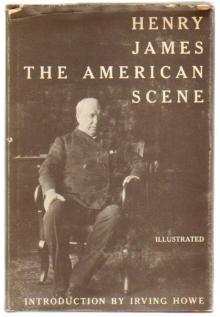 The American
The American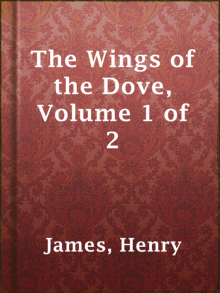 The Wings of the Dove, Volume 1 of 2
The Wings of the Dove, Volume 1 of 2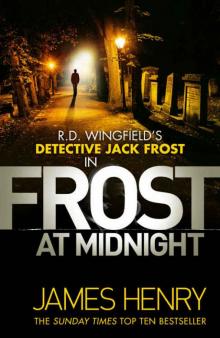 Frost at Midnight
Frost at Midnight Morning Frost
Morning Frost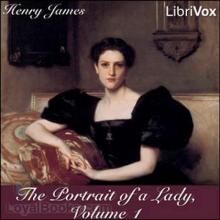 The Portrait of a Lady — Volume 1
The Portrait of a Lady — Volume 1 Fatal Frost
Fatal Frost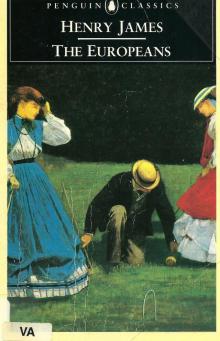 The Europeans
The Europeans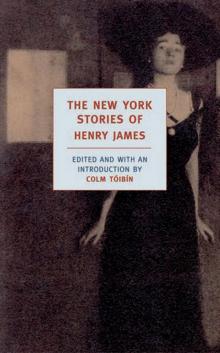 The New York Stories of Henry James
The New York Stories of Henry James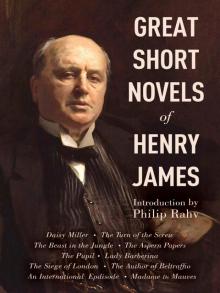 Great Short Novels of Henry James
Great Short Novels of Henry James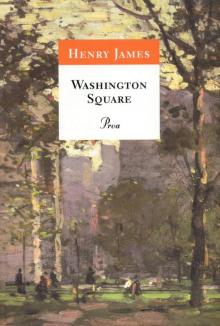 Washington Square
Washington Square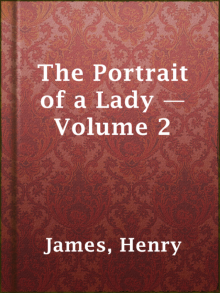 The Portrait of a Lady — Volume 2
The Portrait of a Lady — Volume 2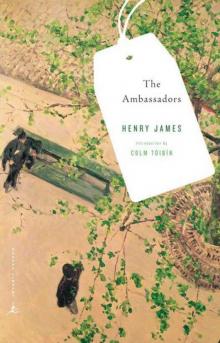 The Ambassadors
The Ambassadors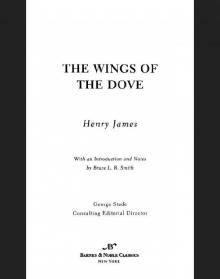 The Wings of the Dove
The Wings of the Dove The Princess Casamassima (Classics)
The Princess Casamassima (Classics)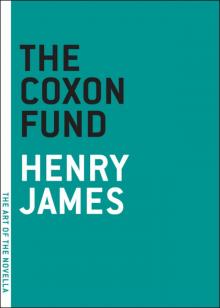 The Coxon Fund
The Coxon Fund First Frost
First Frost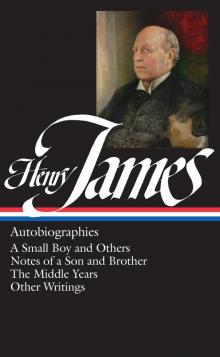 Henry James
Henry James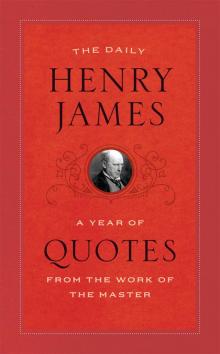 The Daily Henry James
The Daily Henry James Travels With Henry James
Travels With Henry James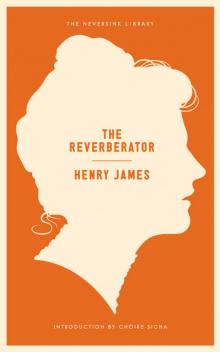 The Reverberator: A Novel
The Reverberator: A Novel What Maisie Knew (Henry James Collection)
What Maisie Knew (Henry James Collection)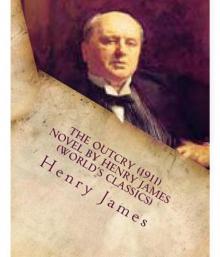 The Outcry
The Outcry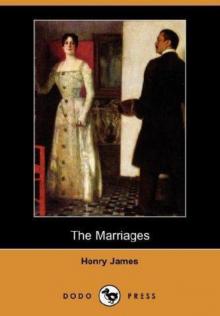 The Marriages
The Marriages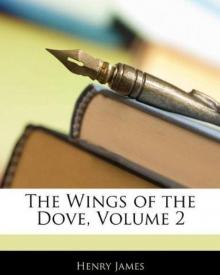 The Wings of the Dove, Volume 2
The Wings of the Dove, Volume 2 The Bostonians, Vol. I
The Bostonians, Vol. I The Outcry: -1911
The Outcry: -1911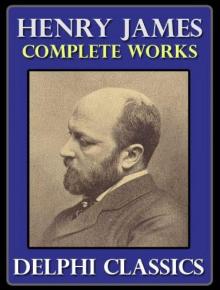 The Complete Works of Henry James
The Complete Works of Henry James Letters from the Palazzo Barbaro
Letters from the Palazzo Barbaro The Pupil
The Pupil The Bostonians, Vol. II
The Bostonians, Vol. II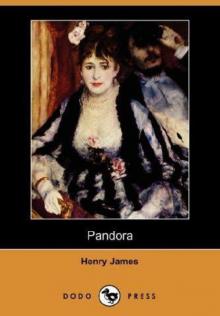 Pandora
Pandora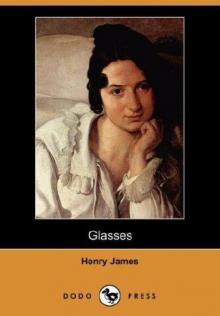 Glasses
Glasses The Princess Casamassima
The Princess Casamassima What Maisie Knew
What Maisie Knew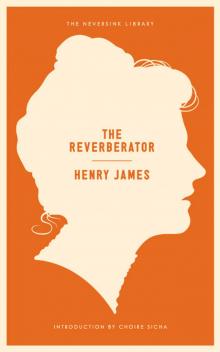 The Reverberator
The Reverberator The Golden Bowl - Complete
The Golden Bowl - Complete Confidence
Confidence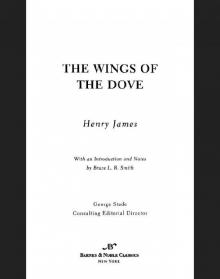 Wings of the Dove (Barnes & Noble Classics Series)
Wings of the Dove (Barnes & Noble Classics Series) The Spoils of Poynton
The Spoils of Poynton